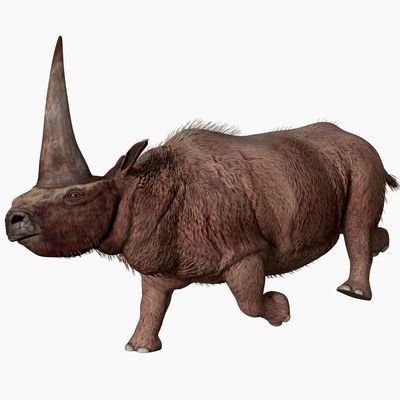
Unicorns, they’re just like us: uglier than previously believed land-dwellers who, despite being both literally and figuratively big-headed, are powerless under the crushing forces of climate change.
In fact, according to new research published in the journal Nature Ecology & Evolution, early humans lived alongside 9,000-pound Siberian unicorns, which bear no resemblance to any elegant, rainbow-colored depiction of the mythical creatures we’ve imagined. While scientists have known of these unicorns’ existence for decades, they previously believed that the beasts went extinct around 200,000 years ago. After analyzing unicorn DNA for the first time, scientists have come to realize they were way off; Elasmotherium sibiricum were roaming Eastern Europe and Central Asia until at least 39,000 years ago, meaning they coexisted with humans.
The new findings also shed light on the cause of the rhinoceros-esque animal’s untimely extinction: climate change. According to the study, the Siberian unicorn couldn’t withstand the start of the ice age in Eurasia, which froze much of the ground and reduced the grass on which it subsisted.
“If we look at timing, it’s during a period of climate change, which wasn’t extreme, but it did cause a whole bunch of much colder winters that we think really altered the extent of the grassland in the area,” Alan Cooper of the Australian Centre for Ancient DNA told ScienceAlert. “The worrying thing about it is it shows you don’t have to have major climate change to have vegetation responses that can wipe out a species — and this is before humans had restricted animals’ ranges. Can you imagine what will happen today?”
Good to know what we have to look forward to!




